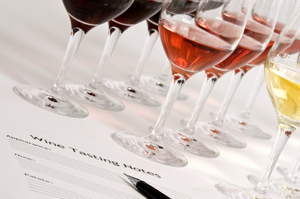Tasting wine was a mystery to me for a very long time. I was in awe of people who could take a quick sniff and pick out dozens of aromas, or take a tiny sip and know exactly what wine was in their glass. It seemed like a magician’s trick, some sort of sleight of hand that I just couldn’t grasp.
However, I now know that wine tasting is a very methodical process that anyone can learn. The only “trick” is that you have to drink a heck of a lot of wine to build up your internal database of wines for identification. That said, you can definitely learn enough in a short time to impress your friends. So let’s get started!
1. Appearance
Wine tasting begins well before any wine reaches your lips. The appearance of a wine can tell you a few things about it, but don’t spend more than a minute or so on this step. A quick visual assessment is sufficient. Pour yourself a glass about 1/3 full and take a good look.
- Clarity: Most wines should be clear. There are some wines that are purposefully made unfiltered and cloudy, but apart from that, any haziness or particles floating in a wine may signal a fault.
- Color: The great majority of white wines are lemon in color. If a white wine is more gold, that generally means it is older. Many red wines are ruby in color. If your red wine has more purple in it, it is very young, and if it is turning garnet to brown, it is likely older.
- Intensity: This is the depth of color and can help you narrow down (or eliminate) grape varieties. For example, Cabernet Sauvignon and Syrah produce very deep-colored wines while Pinot Noir and Beaujolais are much lighter colored. Deeper red wines tend to be richer, oaked and more concentrated than lighter red wines. For white wines, if the color is deeper, it can indicate oak aging, such as with a Chardonnay. Stainless steel aged wines, like Sauvignon Blanc, tend to be paler.
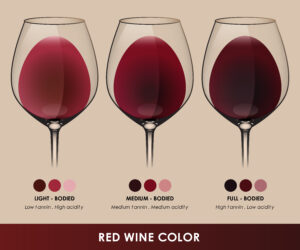
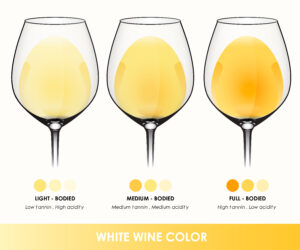
- Legs or Tears: Swirl the wine and hold up your glass. Take a look at the “legs” or “tears” as the wine runs down the inside of the glass. Thick, slow legs could be an indication that your wine has a higher alcohol percentage or residual sugar in it. However, legs aren’t always the best indicator of a wine, so take them with a grain of salt.
2. Nose
- Condition: Before you swirl your glass, take a quick sniff. Does it smell fresh or musty? If you’re smelling wet cardboard, your grandmother’s basement, rotten eggs or nail polish remover, the wine likely has some kind of fault.
- Aromas: Swirl your glass to release those aromatic compounds, stick your nose in and take a whiff. The most important thing to remember is that whatever you are smelling is correct. Wine tasting is very subjective, so don’t be afraid that you’ll be “wrong” – there is no such thing. It is helpful to start with the most obvious aromas first, focusing on each of the categories below individually. If you try to pick out every aroma all at once, it is much harder.
-
-
- Primary aromas are those that come from the grapes and vineyard. Think 1) fruits, 2) herbs and 3) flowers. White wine will often have aromas of green, citrus, stone and/or tropical fruits (apples, lemon, lime, peach, pineapple, pear, etc.). Red wine
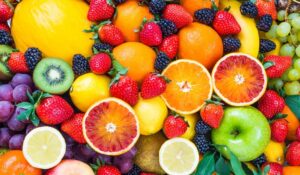 s will often have aromas of red, black and blue fruits (blackberry, blueberry, cherry, strawberry, etc.). You may get a whiff of herbal/spicy aromas like bell pepper, rosemary or black pepper. Floral aromas, such as violets, chamomile or roses, can be harder to detect.
s will often have aromas of red, black and blue fruits (blackberry, blueberry, cherry, strawberry, etc.). You may get a whiff of herbal/spicy aromas like bell pepper, rosemary or black pepper. Floral aromas, such as violets, chamomile or roses, can be harder to detect.
- Primary aromas are those that come from the grapes and vineyard. Think 1) fruits, 2) herbs and 3) flowers. White wine will often have aromas of green, citrus, stone and/or tropical fruits (apples, lemon, lime, peach, pineapple, pear, etc.). Red wine
-
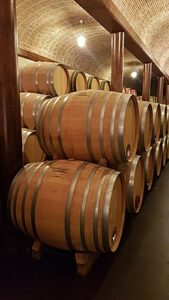
-
-
- Secondary aromas are those that come from the winemaking process. In red wines this often means aromas from oak aging, such as toast, cedar, smoke, vanilla and/or coconut. In white wines, this may be aromas from yeast (pastry, bread, stale beer) or malolactic fermentation (butter and cream) like you get in Chardonnay, for example.
-
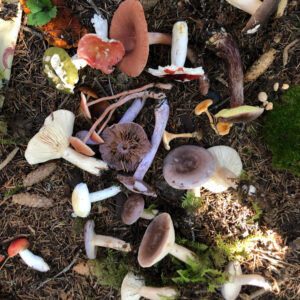
-
-
- Tertiary aromas are those that result from aged wine, such as mushroom, earth, tobacco, leather and nuts.
-
Picking out subtle aromas in wine is not easy. The best way to train for it is to smell everything – go to the produce section of your grocery store and sniff every fruit, herb and vegetable available. You may get some odd glances, but this helps build a library of aromas in your brain that you can call on when tasting wine. Another option that won’t get quite so may sideways looks is to purchase a wine aroma kit. These kits come in a variety of sizes and contain vials of common wine aromas that you can use to test your aroma recall in the privacy of your own home.
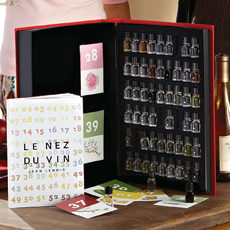
3. Palate
It’s finally time to taste the wine – my favorite part! Take a good mouthful and swish it around your mouth like mouthwash, coating every part of your pallet. Then spit or swallow the wine – repeat as many times as needed – and think about the following (and write down your conclusions so you don’t forget them):
- Sweetness: Is the wine dry or does it have any residual sugar in it? Remember, fruity does not mean sweet. Sweetness is from remaining sugar that hasn’t been converted into alcohol.
- Tannin: Especially with many red wines, you’ll notice tannins as a mouth-drying sensation, which is most obvious on the gums above your front teeth. Tannins give a wine body and structure.
- Alcohol: Does the wine burn a little when you swallow it? If so, it probably has a higher level of alcohol. Alcohol also contributes to the body of a wine.
- Acidity: The acids in a wine will cause your mouth to water. The more and longer you salivate, the higher the acidity in the wine. Acidity gives a wine freshness and balances out tannins and residual sugar, if any.
- Body: How heavy does the wine feel in your mouth? A full-bodied wine will have a consistency reminiscent of whole milk while a light-bodied wine will be more like water or skim milk.
- Flavors: What are you tasting and how intense are those flavors? Flavors follow the same primary, secondary and tertiary characteristics as aromas, and consider whether what you smelled you also taste.
- Finish: How long do those delicious flavors linger on your palette after you swallow your wine? Higher quality, more complex wines will likely have a longer finish than simpler, less expensive wines.
All of these considerations will help you deduce the wine in your glass, but you need to drink a lot of wine to do this. For example, in order to identify Cabernet Sauvignon correctly, you would need to know that it is deeply colored, dry, full-bodied, with high alcohol and aromas and flavors of blackberry, black cherry, pepper and cedar.
So the moral of the story is keep drinking! And drink lots of different types of wine. Follow the above steps and take notes on what you notice about the wine. Before you know it, you’ll be impressing everyone with your wine expertise.
Cheers!

